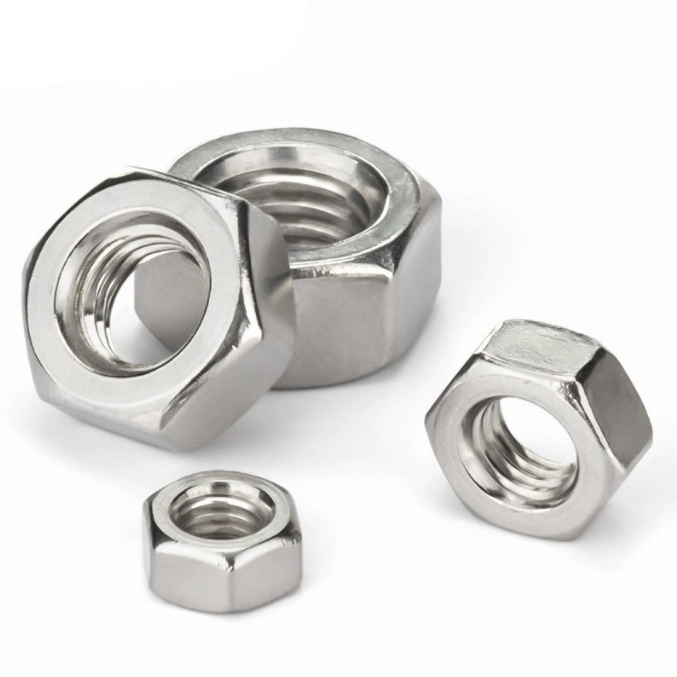

Understanding ASTM A325 Type 3 Specifications for High Strength Structural Bolts and Their Applications
اگست . 07, 2024 04:25 Back to list
Understanding ASTM A325 Type 3 Specifications for High Strength Structural Bolts and Their Applications
Understanding ASTM A325 Type 3 Bolts
ASTM A325 is a specification developed by ASTM International that outlines the requirements for structural bolts, specifically those that are used in high-strength bolted connections in steel structures. Among the various grades and types of bolts specified under ASTM A325, Type 3 bolts hold particular significance due to their unique properties and applications.
What is ASTM A325 Type 3?
ASTM A325 bolts are categorized into three types based on their physical properties and the conditions under which they are used. Type 3 bolts are distinguished by their weathering resistance, making them especially valuable for use in outdoor environments where exposure to harsh weather conditions can lead to corrosion. They are made from a specific alloy steel that contains additional copper, which enhances their performance and durability against atmospheric corrosion.
These bolts are typically used in applications where traditional carbon steel bolts would fail due to rust and deterioration. The Type 3 designation means that they have been evaluated and tested to ensure they meet or exceed the necessary strength and corrosion-resistance thresholds specified in the ASTM standards. This level of assurance is critical for engineers and construction professionals when selecting fasteners for significant structures.
Characteristics and Benefits
The primary benefit of ASTM A325 Type 3 bolts lies in their enhanced resistance to corrosion, which is particularly beneficial in bridge construction, building frameworks, and other infrastructure projects where longevity and safety are paramount. The weathering steel used in their manufacture develops a protective oxide layer that prevents further corrosion, thus extending the service life of the connection.
astm a325 type 3

Another noteworthy feature of Type 3 bolts is their strength. They maintain the high-strength properties typical of A325 bolts, including yield and tensile strength, ensuring that they can withstand the loads and stresses encountered in structural applications. Additionally, the manufacturing process for these bolts adheres to rigorous quality control measures, providing further confidence in their performance.
Applications
The applications of ASTM A325 Type 3 bolts are vast and varied. They are primarily utilized in outdoor structures such as bridges, buildings, and towers—where reducing the risk of fastener failure due to rust is critical. Their use in highway and railway bridges is particularly common, given these structures’ ongoing exposure to environmental elements like rain, snow, and salt from de-icing processes.
Moreover, Type 3 bolts are also advantageous in marine environments and coastal constructions, where saltwater exposure significantly increases the risk of corrosion. Their ability to withstand such conditions without rapid degradation makes them an ideal choice for builders and engineers looking for reliable fastening solutions.
Conclusion
In summary, ASTM A325 Type 3 bolts are a critical component in ensuring the safety and longevity of structural connections in environments prone to corrosion. Their unique weathering properties, combined with high strength, make them an essential choice for engineers working on various outdoor infrastructure projects. As construction requirements evolve, the use of these bolts will likely continue to grow, highlighting the importance of selecting the right materials to meet the challenges posed by nature. When planning any project that includes bolted connections, considering ASTM A325 Type 3 bolts could be integral to the overall success and durability of the structure.
Latest news
-
Premium Self Tapping Metal Screws: Strong & Easy Install
NewsAug.02,2025
-
Premium Fasteners Manufacturer | AI-Driven Solutions
NewsAug.01,2025
-
Hot Dip Galvanized Bolts - Hebei Longze | High Strength, Corrosion Resistance
NewsAug.01,2025
-
High-Strength Hot Dip Galvanized Bolts - LongZe | Corrosion Resistance, Custom Sizes
NewsAug.01,2025
-
Best Self Tapping Screws for Drywall - Fast & Secure Installation
NewsJul.31,2025
-
High-Strength Hot Dip Galvanized Bolts-Hebei Longze|Corrosion Resistance&Customization
NewsJul.31,2025

